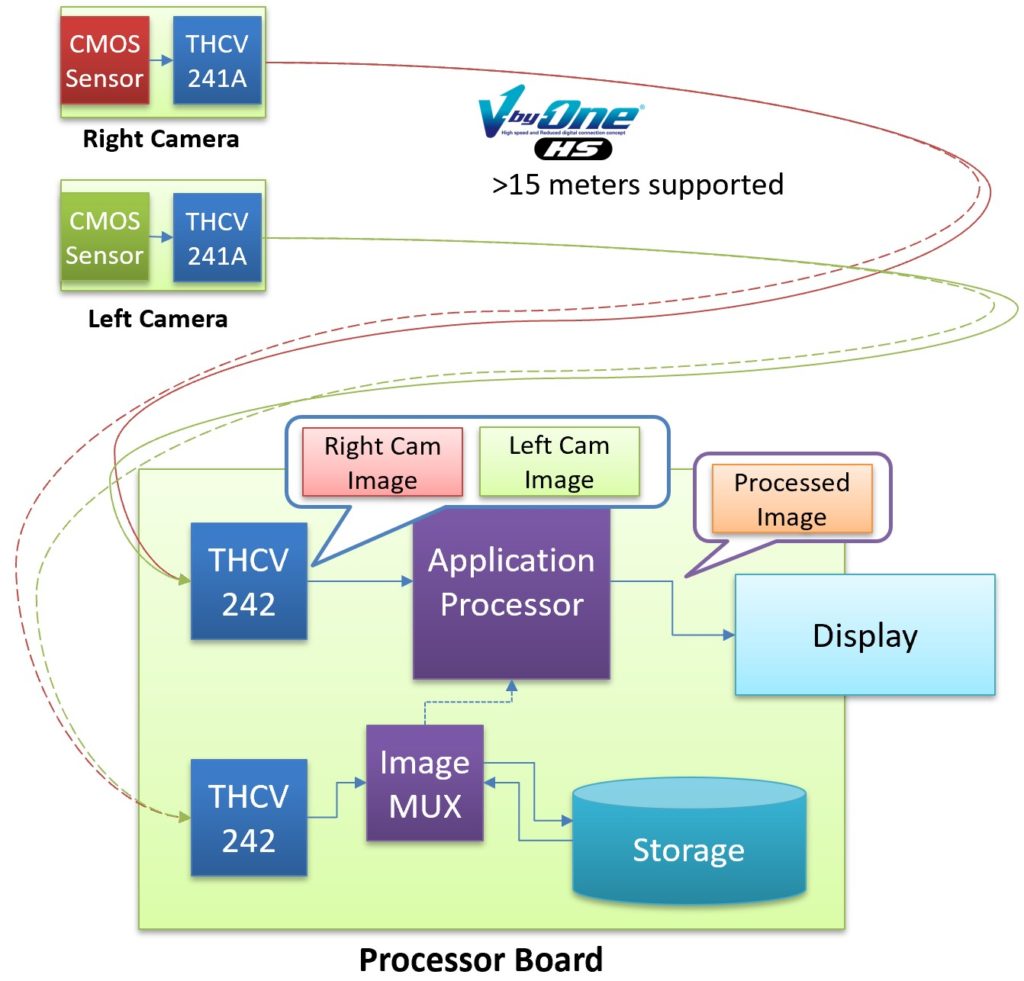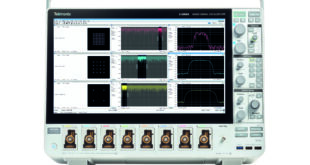THine announces the high-volume availability of its new MIPI CSI-2 extension chipset, THCV241A and THCV242.
This new chipset allows engineers to extend MIPI CSI-2 transmission from 1ft to over 15 metres.
These new video chips also enable designs that can receive two different video inputs simultaneously, as well as applications that can copy and distribute (simultaneously replicate) one video stream into two.
Demands for higher resolution and/or higher frame rate cameras require MIPI CSI-2 output, which are limited to a short transmission range of approximately 1ft. THCV241A serialises up to four lanes of MIPI CSI-2 signals and converts it into one or two lanes of V-by-One HS (developed and owned by THine).
V-by-One HS technology supports up to 4Gbps per lane which is robust enough to extend the transmission of 1080p60 2Mpixel uncompressed video for greater than 15 metres with typical cables.

THCV241A’s two lanes of V-by-One HS supports up to an 8Gbps data rate with the capability to use the second V-by-One HS lane to support data copy and distribution (replication) applications.
The THCV242 chip deserialises up to 2 V-by-One HS lanes back to the original MIPI CSI-2 signal.
The chipset supports Sub-Link that aggregates bidirectional low speed signals, such as GPIO.
The separation of high speed signal path, V-by-One HS, and Sub-Link enables easy debugging and gives more choices for physical harnesses including the utilisation of Keyssa’s contactless connection for systems benefiting from or requiring a ruggedised, low latency, detachable camera.
Mirrored video signal redundancy that is supported by this chipset can be used for troubleshooting system problems or for applications such as agricultural robotics and 3D surgical equipment which require a secondary application processor that is distant from the source video camera.
Also, any applications that require cameras far from host processors can utilise the features of this chipset.
“This chipset will give more freedom to designers for leading edge technologies, such as Autonomous and 3D visualising,” said Tak Iizuka, Chief Solution Architect of THine. “The capability to support 2 V-by-One HS inputs enable new and exciting dual camera applications, like 3D recognition and XR devices that usually require multiple cameras.”
Yasuhiro Takada, CEO of THine, said: “We are excited to announce this new chipset because this enables our customers to bring products to market faster, and also gives them the ability to develop new types of applications with a variety of form factors that were not previously possible.”
 Engineer News Network The ultimate online news and information resource for today’s engineer
Engineer News Network The ultimate online news and information resource for today’s engineer





